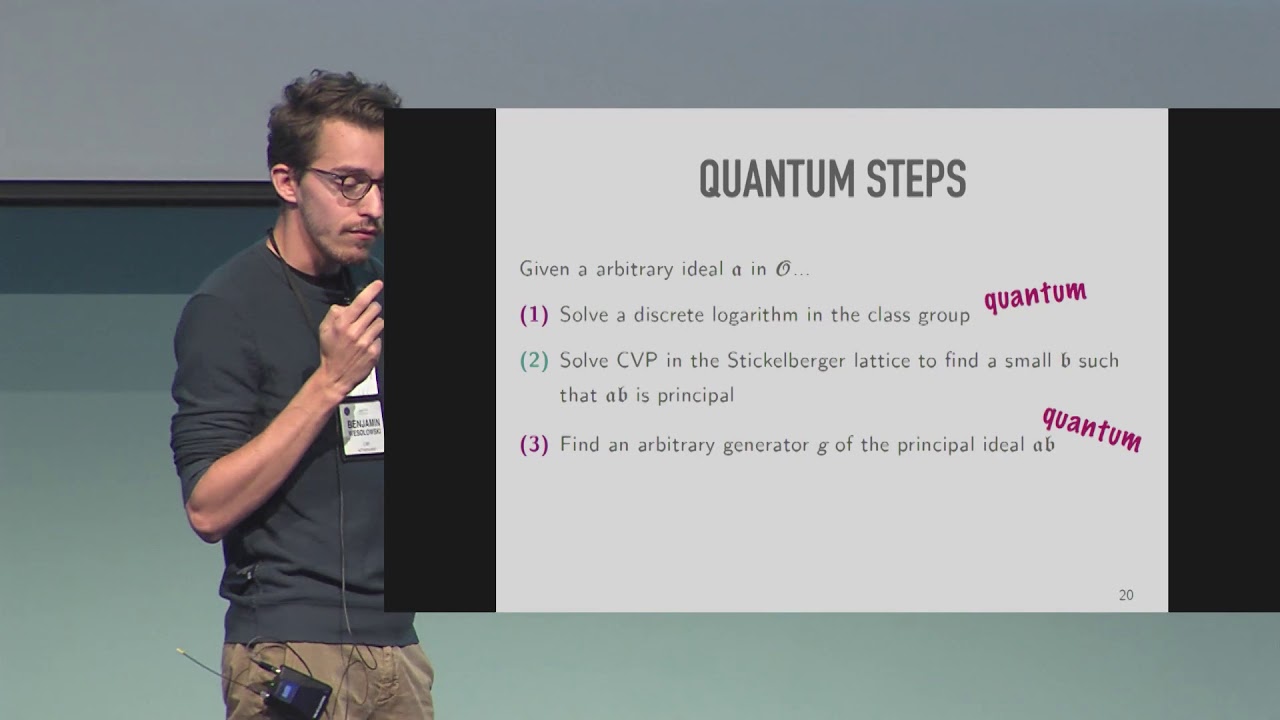Welcome to the resource topic for 2019/234
Title:
On the Shortness of Vectors to be found by the Ideal-SVP Quantum Algorithm
Authors: Léo Ducas, Maxime Plançon, Benjamin Wesolowski
Abstract:The hardness of finding short vectors in ideals of cyclotomic number fields (hereafter, Ideal-SVP) can serve as a worst-case assumption for numerous efficient cryptosystems, via the average-case problems Ring-SIS and Ring-LWE. For a while, it could be assumed the Ideal-SVP problem was as hard as the analog problem for general lattices (SVP), even when considering quantum algorithms. But in the last few years, a series of works has lead to a quantum algorithm for Ideal-SVP that outperforms what can be done for general SVP in certain regimes. More precisely, it was demonstrated (under certain hypotheses) that one can find in quantum polynomial time a vector longer by a factor at most \alpha = \exp({\tilde O(n^{1/2})}) than the shortest non-zero vector in a cyclotomic ideal lattice, where n is the dimension. In this work, we explore the constants hidden behind this asymptotic claim. While these algorithms have quantum steps, the steps that impact the approximation factor \alpha are entirely classical, which allows us to estimate it experimentally using only classical computing. Moreover, we design heuristic improvements for those steps that significantly decrease the hidden factors in practice. Finally, we derive new provable effective lower bounds based on volumetric arguments. This study allows to predict the crossover point with classical lattice reduction algorithms, and thereby determine the relevance of this quantum algorithm in any cryptanalytic context. For example we predict that this quantum algorithm provides shorter vectors than BKZ-300 (roughly the weakest security level of NIST lattice-based candidates) for cyclotomic rings of rank larger than about 24000.
ePrint: https://eprint.iacr.org/2019/234
Talk: https://www.youtube.com/watch?v=3I9ODqwyCCg
See all topics related to this paper.
Feel free to post resources that are related to this paper below.
Example resources include: implementations, explanation materials, talks, slides, links to previous discussions on other websites.
For more information, see the rules for Resource Topics .
